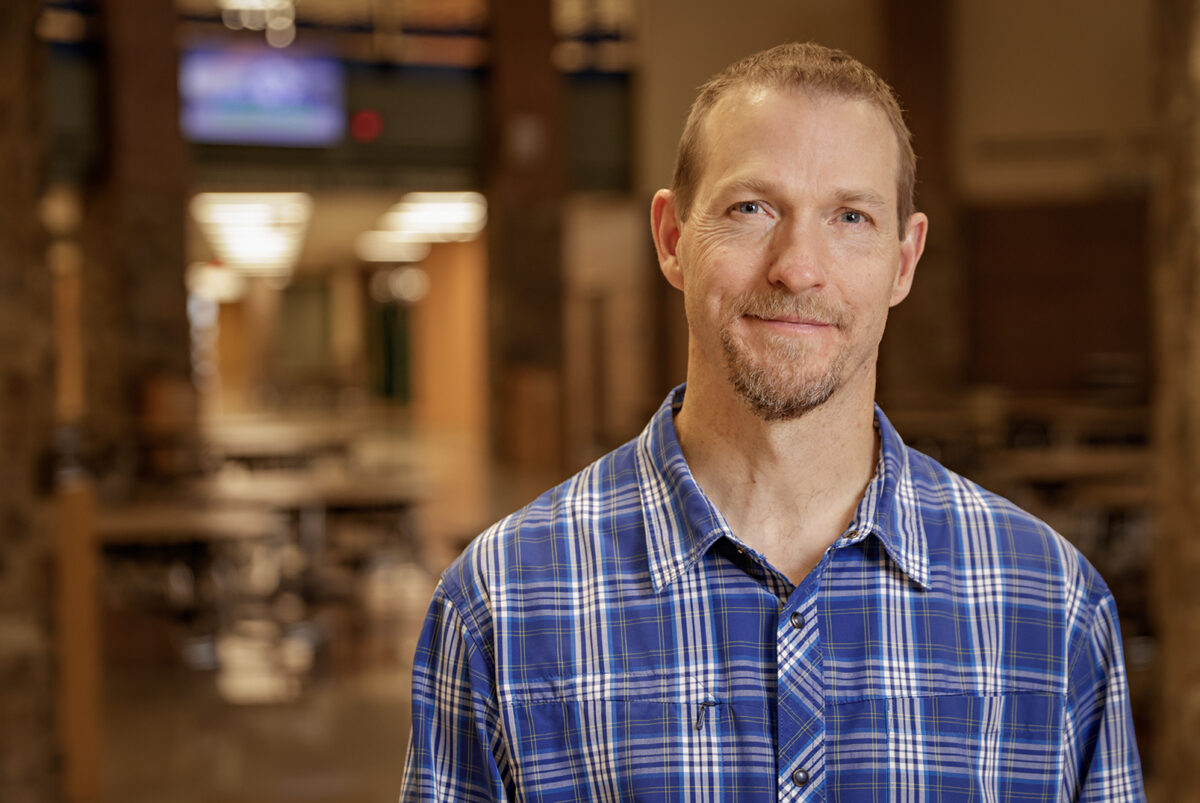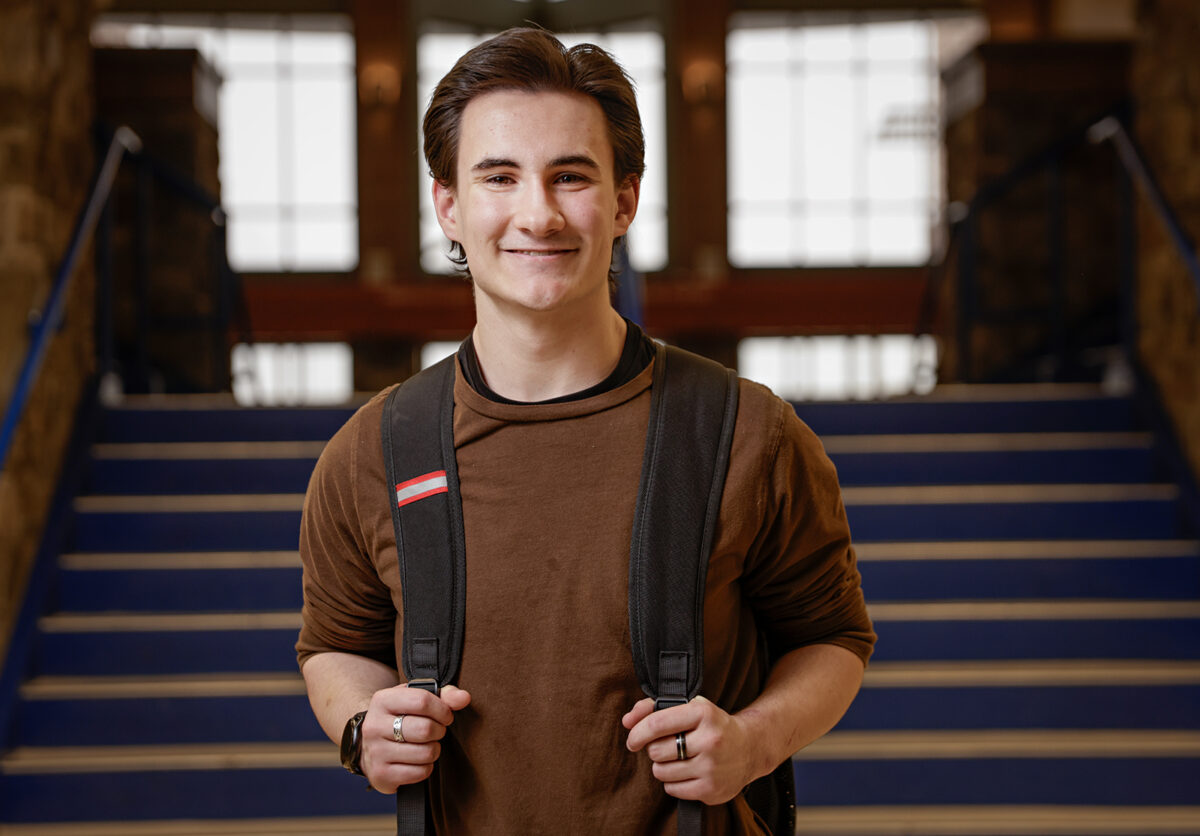Ascent’s Uphill Climb
The Ascent program transformed the lives of at-risk Glacier High School students before shutting down due to budget cuts last fall. Now, its supporters are hoping to bring it back for the next generation of Kalispell teenagers.
By Denali Sagner
Glacier High School counselor Chris Weaks says the question “haunted” him.
In a fraught and technology-immersed world, high school students walked through the hallways carrying the baggage of anxiety, depression and other mental health disorders. Suicide is the No. 2 cause of death for Montana’s children, teens and adults. Montana’s youth suicide rate is more than double the national rate. Teenagers are reporting higher and higher levels of sadness, hopelessness and anxiety.
“The question was: how do we address this? What do we do about it?”
It was six years ago that Weaks put this question to work, embarking on the project that would become the Ascent program, a classroom-based intervention for Glacier’s at-risk students that combined mental health, academic and life skills counseling. Ascent became a home base, and in some cases a lifeline, for students at Glacier who had previously felt lost. It brought teenagers from disparate corners of the school together, coaching them through everything from confronting childhood trauma to opening a bank account.
Ascent was a hallmark at Glacier for five years before budget cuts forced it to shutter this school year.
“The funding cut was a huge blow,” Weaks said. “It was tough.”
“Everyone was so supportive of the program. Everyone wanted it to continue,” Lance Labrum, assistant principal at Glacier, said.
Now, as Weaks and Glacier’s advising team try to keep the spirit of Ascent alive without funding, the high school hopes to bring the program back and find donors to support the effort.

The Ascent program’s success, Weaks said, can be attributed to its structure.
The program was organized as an elective course that students fit into their everyday schedules. Ascent would meet for one period a day, five days a week. The class was split by grade level (10th- and 11th-graders were eligible for the program) and gender, making for a typical class size of less than a dozen. Seniors who had moved through Ascent could serve as mentors in the 10th and 11th grade classes.
“When you have that structure and consistency, that everyday meeting, you can pull off anything,” Weaks said.
The goal of Ascent centered around teaching students core life skills and character traits through a combination of classroom discussions, one-on-one counseling and hands-on experiences. Weaks and the counseling team worked on building up empathy, healthy relationships, ethical decision making and planning. Weaks said that the students recommended for Ascent were often lacking in one or multiple of these traits, which hindered their success in and out of school.
At the core of the program was day-to-day classroom lessons. Teachers and counselors would guide students through group discussions where they could open up about daily struggles and mental health challenges. Topics included anger management, conflict resolution and community engagement.
“The philosophy with the classroom was, students really need to be noticed and seen for who they are. That was huge — meeting every student where they’re at in their life story,” Weaks said.
Glacier High School senior Eugene Guy said that before he joined Ascent, he was riddled with anxiety and depression. He couldn’t open up to anybody in his life. The high school felt like a sea of faces and his future after graduation seemed murky.
Joining Ascent, Guy said, was “eye-opening.”
“One week in and I thought, ‘I like this class,’” the high school senior said. “Not only is the teacher amazing, because he was, but I was starting to get to know more of those guys, their characters, what they stood for, and what they did on the day-to-day basis. A month in, I really realized, ‘This is something big.’”
In addition to building support within the classroom, the Ascent program immersed students in their community.
Representatives from Park Side Credit Union taught Ascent students how to set up college funds. Job Service Kalispell spoke to the class, laying out post-graduate employment options. Ascent students cooked a Thanksgiving meal for their families, embarked on ski trips and overnight retreats and made visits to Montana colleges and universities. They wrote letters to elementary school pen pals and spent time with cognitively delayed high school students.
Labrum said the program focused on “giving kids tools in their tool belt to deal with life’s challenges.”
Guy was not alone in the mental health struggles that brought him to Ascent.
According to a 2023 report by the national nonprofit Mental Health America, 20% of Montana youth reported suffering from at least one major depressive episode in the past year, compared to 16% nationally.
Shaunda Wegner, director of behavioral health at Greater Valley Health Clinic, said that she’s seen an increase in anxiety, depression and attention disorders in adolescents across the Flathead Valley.
While mental and behavioral health problems run rampant, access to care is limited. Rising costs and a stagnant Medicaid reimbursement rates have forced numerous providers to close in recent years. Private therapy is costly, and thousands of Montanans have lost their Medicaid coverage after the state embarked on a Medicaid redetermination campaign last year.
“There seems to be several barriers to access to mental health treatment,” Wegner said.
Such barriers made Ascent even more important, its advocates say, as it got teenagers much needed support without the cost of traditional therapy. Weaks called Montana’s patchwork system of mental health resources a “maze” and spoke about the “hoops to get through” when families try to access support.
“It wasn’t just a class. It was a lot of other experiences,” Weaks said. “Really the goal was: how do we teach all of these character components in different ways? It really worked.”

Despite its support from teachers, administrators, parents and students, the Ascent program could not run this school year after budget cuts forced Weaks to close up shop.
Keeping Ascent alive had been possible with donations from local foundations and the pandemic-era federal Elementary and Secondary School Emergency Relief (ESSER) funds. Once the ESSER money ran out, and after Kalispell voters declined to pass a number of school levies last spring, the Ascent program was put on the chopping block.
“It’s not a cheap program to run,” Labrum said.
The assistant principal added that had voters passed the school levies, “it would have been a different conversation.”
Weaks and Guy have tried to keep Ascent alive as an extracurricular club, but without a set class period, it’s hard to coordinate schedules and draw students in. Guy says that at an Ascent club meeting, only five or six students typically show up.
“It’s like trying to fit something that’s too big into something that’s way too small,” Guy said. “It’s just not going to work.”
The goal for Ascent’s supporters is to find alternative funding to get the program up and running again.
For Guy, his progress in high school can be attributed to the support he received in Ascent.
Guy comes from a military family, but health problems prevented him from joining the Army after college. Unsure of what to do next, he went through much of high school feeling lost.
It was a visit to Flathead Valley Community College that opened Guy’s eyes up to his post-graduate options.
“I have a college plan,” he said with pride. “I have the money to go to college. I know where to go to college.”
The high school senior said Ascent completely transformed his social experience, as well. While he once floated through the hallways feeling alone, he now makes a point of introducing himself to others and joining strangers at the lunch table.
A slogan he came up with for Ascent reads, “If you sit alone, come sit alone with us.”
Labrum said that the Ascent program helped to dramatically lower dropout rates for at-risk students. Even for those who didn’t make it to graduation, it kept them in school long enough to figure out their next steps.
It’s a societal benefit that Weaks says ripples beyond the halls of Glacier High School.
Students who drop out of high school are far more likely to use illicit drugs and abuse alcohol, according to the national Substance Abuse and Mental Health Services Administration. Adolescents who fail to finish high school are also more likely to encounter the criminal justice system, have poor physical health and experience unemployment.
“When you weigh the cost, you’re making a very important investment, not only in your school, in the lives of these students,” Weaks said, discussing the budget cuts that shuttered the program. “You’re changing lives, but you’re investing in your community and you’re investing in your country. I feel like it’s a worthwhile investment.”
“If other people want to support it, we’re all for that.”
For more information on how to support the Ascent program, call Glacier High School at 406-758-8600.
Editor’s Note: A previous version of this story stated that representatives from Whitefish Credit Union taught Ascent students how to set up college funds, per information given to the Beacon by Ascent program leaders. Representatives from Park Side Credit Union, not Whitefish Credit Union, provided financial education to Ascent students.